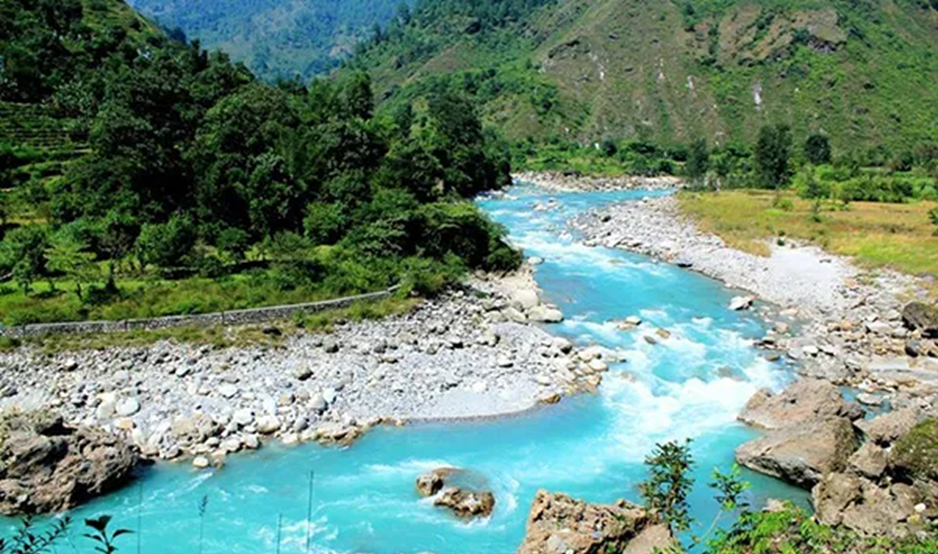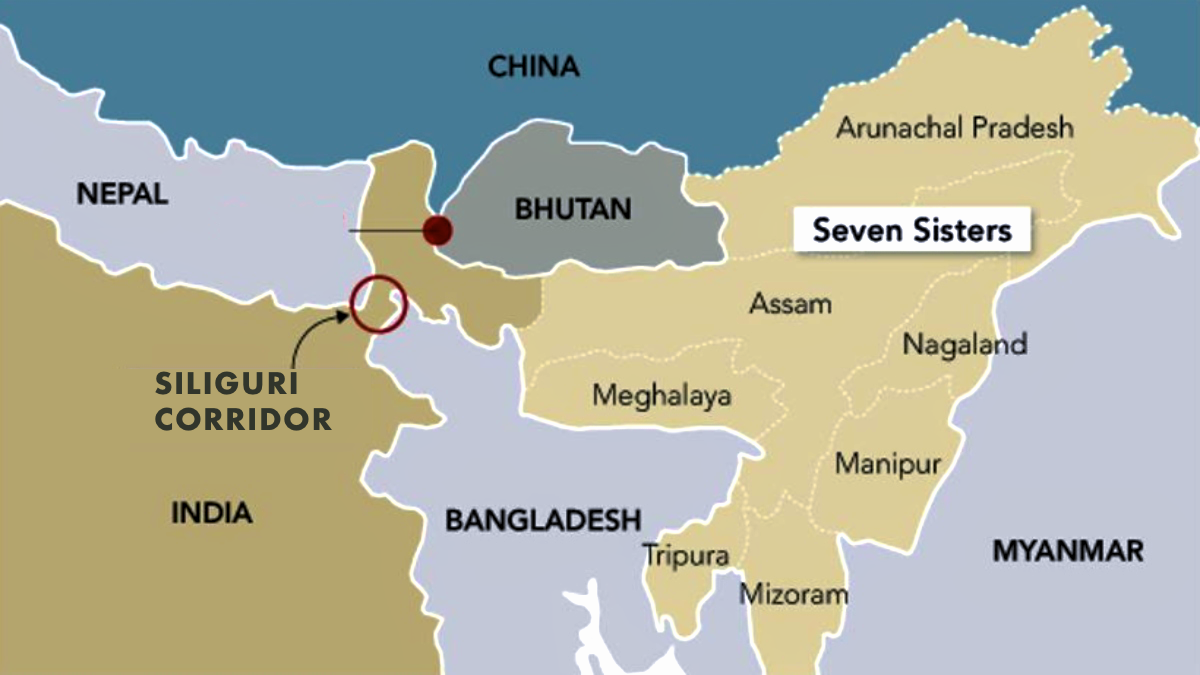Jammu & Kashmir Switch to Hindi
First Cherry Cargo Train
Why in News?
In a first-of-its-kind initiative to transport perishable produce from Jammu and Kashmir, the Jammu Railway Division is set to flag off its first Cherry Cargo Train.
Key Points
- About the Cherry Cargo Train:
- It has been launched by the Northern Railway, Jammu Division, to create a reliable rail-based transportation channel for perishable agricultural goods.
- It is designed specifically to facilitate the shipment of cherries and similar produce to markets outside J&K.
- Logistics and Route:
- The cargo will be transported from Katra Railway Station in Jammu and Kashmir to Bandra Railway Station in Mumbai.
- A Parcel Van (VP) will be attached to a regular goods train for this purpose.
- VP is a request for the allocation of a full parcel van for the shipment of goods.
- The journey is expected to take 30 hours, significantly reducing transit time compared to traditional road transport.
- Stakeholders and Planning:
- This effort was finalized after extensive consultations between the Northern Railway, the Horticulture Department of J&K, and various fruit grower associations.
Significance and Benefits of the Initiative
- Benefits for Fruit Growers:
- The use of rail transport ensures that perishable produce like cherries reaches markets faster, thereby reducing the chances of spoilage and maintaining quality.
- It provides a cost-effective alternative to road transportation, benefiting small and medium-scale growers economically.
- Impact on the Region:
- The initiative is expected to boost the economy of J&K by enhancing the market reach of its agricultural products.
- It will also help reduce road traffic congestion and environmental pollution, making it a sustainable option for future freight movement.
- If successful, this model could be replicated for other produce such as apples, pears, and plums, expanding its benefits further.
Kashmir’s Cherry
- Cherry is a crucial early-season fruit crop in Kashmir, typically harvested during May and June.
- J&K contributes approximately 95% of India’s total cherry production, making it the leading producer in the country.
- Five main cherry varieties grown in Kashmir include:
- Mishri – the sweetest and most expensive.
- Double cherry – widely cultivated for canning, juice, and jam.
- Makhmali, Black (Gol), and Awal Number – locally popular.
- Cherry farming is an important source of mid-year income for fruit growers, especially before the apple harvest season.
- The crop is extremely sensitive to weather conditions, especially:
- Heavy rainfall – which causes the fruit to crack and rot.
- Hailstorms and temperature drops – which disrupt harvesting and reduce shelf life.
Uttarakhand Switch to Hindi
Sirkari Bhyol Rupasiya Bagad Hydroelectric Project
Why in News?
The Sirkari Bhyol Rupasiya Bagad Hydroelectric Project in Uttarakhand has received in-principle approval (preliminary or conditional agreement ) from the Forest Advisory Committee (FAC) under the Ministry of Environment, Forest and Climate Change (MoEFCC).
Key Points
Sirkari Bhyol Rupasiya Bagad Hydroelectric Project
- Project Overview:
- The project is located on the Gori Ganga River in the Pithoragarh district of Uttarakhand.
- It is planned to have an installed capacity of 120 megawatts (MW).
- The FAC has approved the diversion of 29.997 hectares of forest land required for the project’s implementation.
- Infrastructure Design & Impact:
- The project includes approximately 1 km of tunnel construction.
- The majority of the project infrastructure will be built underground, which helps in reducing the environmental footprint.
- There will be no displacement of local populations due to the project.
- The site does not fall within any national park, wildlife sanctuary, or eco-sensitive zone, ensuring minimal ecological disruption.
- Energy Potential of the Project:
- The project is expected to generate around 529 million units of clean, renewable energy annually.
- This generation will help meet local energy demands and contribute significantly to Uttarakhand’s energy independence.
- Socio-Economic Impact:
- The project will create both temporary jobs during the construction phase and permanent employment opportunities once operational.
- It will also lead to the improvement of local infrastructure, including roads and public facilities.
- These developments are expected to reduce migration from the region by enhancing economic opportunities for local residents.
Forest Advisory Committee (FAC)?
- It is a statutory body which was constituted by the Forest (Conservation) Act 1980.
- The FAC evaluates industrial projects which require forest land for their activities.
- The committee may or may not approve a project and can give approval for forest land to be diverted, after imposing certain conditions.
Gori Ganga River
- The Gori Ganga River, also known as Ghori Ganga or Gori Gad, flows through the Munsiyari tehsil of Pithoragarh district in Uttarakhand.
- It originates from the Milam Glacier, located northeast of Nanda Devi, and travels a course of approximately 104 kilometers before merging with the Kali River at Jauljibi.
- A significant tributary, the Gonga stream, joins the Gori Ganga near the Milam village, just 1 km below the glacier snout.
- Geographical Significance:
- The river valley acts as a drainage basin for numerous glaciers and streams that descend from the eastern slopes of the Nanda Devi Sanctuary, and from the Panchachuli, Rajramba, and Chaudhara mountain ranges.
- Other notable contributors include the Ralam Gad, Pyunsani Gadera, and the Kalabaland–Burfu Kalganga glacier system, which feed into the Gori Ganga from the east.
- Tourism Potential:
- The Gori Ganga Valley is also known for its scenic trekking routes leading to iconic Himalayan peaks such as Nanda Devi East, Hardeol, Trishuli, Panchachuli, and Nanda Kot.
- The valley holds both ecological value and adventure tourism potential, making it an area of multifaceted importance.
Maharashtra Switch to Hindi
Iron Ore Processing Plant in Gadchiroli
Why in News?
The Ministry of Environment, Forest and Climate Change has granted in-principle forest clearance to Lloyd Metals and Energy Limited for setting up an iron ore beneficiation plant in Maharashtra’s Gadchiroli district.
Key Points
Iron Ore Beneficiation Plant
- Location and Forest Land Diversion:
- The plant is to be set up in Gadchiroli, a region affected by Left-Wing Extremism (LWE) for decades.
- The approval permits the diversion of 937 hectares of forest land and the felling of 1.23 lakh trees.
- The MoEFCC’s Forest Advisory Committee (FAC) has recommended compensatory afforestation in Chiplun, Ratnagiri district on Maharashtra’s coast.
- Wildlife Clearance:
- The plant’s area partly overlaps with a critical tiger corridor between Tadoba and Indravati Tiger Reserves, necessitating wildlife clearance from the National Board for Wildlife (NBWL).
- Significance:
- Industrial Development: The plant is designed to process raw iron ore (hematite quartzite), improving ore quality and supporting steel and allied industries.
- Employment and Economic Growth: It is expected to generate employment opportunities and promote regional economic growth, aligning with Maharashtra’s push to expand mining and industrial activity in Gadchiroli.
- Challenges and Concerns:
- Impact on Tribal Communities: Tribal communities have raised concerns about displacement and rights violations, underscoring the need for strict Forest Rights Act (FRA) compliance and genuine tribal participation.
- Environmental Risks: Extensive tree felling near tiger corridors poses serious biodiversity risks, making strict monitoring and mitigation measures crucial.
- While compensatory afforestation is proposed in Chiplun, Ratnagiri district to offset deforestation, concerns persist regarding the effectiveness of such measures.
Indravati National Park
- About:
- It is situated in the Bijapur district of Chhattisgarh.
- It was established in 1981 and declared a tiger reserve in 1983 under India’s Project Tiger.
- It is named after the Indravati River, which flows from east to west and forms the reserve's northern boundary with Maharashtra.
- Vegetation:
- Comprises three major forest types:
- Moist Mixed Deciduous Forest with Teak.
- Moist Mixed Deciduous Forest without Teak.
- Southern Dry Mixed Deciduous Forest.
- Comprises three major forest types:
- Flora:
- Common tree species include teak, achar, karra, kullu, shisham, semal, haldu, arjun, bel, and jamun.
- Fauna:
- Hosts one of the last populations of rare wild buffalo.
- Other species include Nilgai, Black Buck, Sambar, Gaur, Tiger, Leopard, Chital, Sloth Bears, and more.
Tadoba Andhari Tiger Reserve
- Location: It is situated in Maharashtra and is the oldest and largest national park in the state.
- Tadoba/Taru is the local deity revered by the tribal people in the area.
- Andhari is derived from the Andhari river which flows through the reserve.
- Geography: It contains two primary lakes, Tadoba Lake and Kolsa Lake, along with the Tadoba River.
- Biodiversity:
Rajasthan Switch to Hindi
Urban Improvement Trust (UIT) in Balotra
Why in News?
The Rajasthan government has set up the Urban Improvement Trust (UIT) for Balotra, following its designation as a new district carved out of Barmer.
- This initiative was announced in the 2025–26 state budget.
Key Points
- Urban Improvement Trust (UIT):
- UIT, also known as Nagar Vikas Nayas, is a statutory body in Rajasthan.
- It was established under the Rajasthan Urban Improvement Act, 1959.
- Objectives:
- Promote planned townships and industrial corridors.
- Accelerate economic growth and attract further investments.
- Streamline urban governance and enhance public service delivery.
- Significance of UIT Formation in Balotra:
- Planned Urban Growth:
- Balotra, home to one of India’s largest textile clusters, has seen rapid industrial growth, and the UIT aims to curb unplanned expansion by ensuring sustainable and structured urban development.
- Infrastructure Development:
- The UIT’s jurisdiction spans key settlements, heritage sites, and new townships, enabling infrastructure upgrades like roads, water, sanitation, and housing in line with modern urban standards.
- Economic Growth and Investment:
- Balotra’s strong investor interest at the Rising Rajasthan Summit 2024 highlights its economic potential, while the UIT will offer an institutional framework to support industrial corridors, townships, and growth.
- Decentralised Urban Governance:
- By covering multiple tehsils and villages, the UIT aims to strengthen decentralised governance and enhance public service delivery through better urban-rural coordination.
- Planned Urban Growth:
Rajasthan's Textile Industry
- About:
- Rajasthan's textile industry plays a crucial role in the state's economy, with a rich heritage and a wide range of traditional and modern production methods.
- It is especially known for its vibrant handicrafts, including block printing, tie-dye (Bandhani), and intricate embroidery.
- Key Features and Significance:
- Rajasthan is a leading producer of cotton and wool, contributing significantly to India’s overall fibre production.
- Rajasthan ranked as the fourth-largest cotton-producing state in the country in FY 2023.
- Gujarat, Maharashtra and Telangana are the other major cotton producing states
- Bhilwara, often referred to as the “Textile City of India,” stands out as a key centre for textile manufacturing and export in the state.
- The state is famous for age-old textile techniques such as Bandhani, Leheriya, Kota Doriya, and Applique.
- The textile sector in Rajasthan effectively combines handwoven traditions with modern machinery, resulting in a diverse range of high-quality textile products.
Rising Rajasthan Global Investment Summit, 2024
- The Rising Rajasthan Global Investment Summit was organised in December 2024 in Jaipur Exhibition Convention Centre (JECC), Sitapura, Jaipur.
- The Investment Summit theme was "Replete, Responsible, Ready," with discussions on sustainable mining, water security, and women-led startups.
- Over 32 countries and 20 international organizations joined the thematic sessions and expos showcasing Rajasthan’s potential.
Uttar Pradesh Switch to Hindi
Buffer Mein Safar Yojana
Why in News?
The Uttar Pradesh Forest and Wildlife Department has launched a new ecotourism initiative named ‘Buffer Mein Safar Yojana’.
Key Points
Buffer Mein Safar Yojana
- Objectives of the Scheme:
- The primary goal of the scheme is to promote sustainable and eco-friendly tourism in the buffer zones of tiger reserves.
- The initiative seeks to empower local communities by offering them training and employment opportunities within the tourism sector.
- It also aims to strengthen wildlife conservation efforts by encouraging community-led protection of biodiversity.
- Significance:
- The initiative is expected to significantly contribute to Uttar Pradesh’s goal of becoming a leading ecotourism destination in India.
- The integrated approach of combining tourism, conservation, and local employment may also serve as a model for other states seeking to balance ecological sustainability with economic growth.
- Implementation Regions:
- Key Tiger Reserves and Buffer Zones:
- The scheme is being implemented in major tiger reserve buffer zones such as Dudhwa, Pilibhit, and Lakhimpur Kheri, which are known for their rich biodiversity and proximity to the India-Nepal border.
- Additional ecologically significant areas like Sohagibarwa and Katarniaghat wildlife sanctuaries have also been included under the scheme.
- Special Ecological Spot:
- Semrai Lake, an important stopover for migratory birds, is being developed as a part of the ecotourism circuit.
- This will provide birdwatchers with new opportunities to explore
- Semrai Lake, an important stopover for migratory birds, is being developed as a part of the ecotourism circuit.
- Key Tiger Reserves and Buffer Zones:
- Tourism Infrastructure Development:
- A modern information centre has been established at the Dudhwa Tiger Reserve to enhance visitor engagement.
- The centre will offer educational insights into the region’s flora and fauna, along with detailed information about conservation efforts.
Dudhwa National Park
- It is located in Lakhimpur Kheri, Uttar Pradesh, near the Indo-Nepal border.
- It was established in 1977 as a National Park (Wildlife Sanctuary since 1958).
- Wildlife & Ecosystem:
- Home to Bengal tigers, leopards, elephants, sloth bears, and 450+ bird species
- Features a diverse ecosystem like grasslands, swamps, and dense forests
- Conservation & Ecotourism:
- Known for habitat restoration and reintroduction of endangered species like the barasingha
- Promotes eco-tourism to support local communities and preserve the environment
Pilibhit Tiger Reserve
- In September 2008, it was declared as the 45th Tiger Reserve of India under the Project Tiger initiative.
- Geography:
- The northern boundary of Pilibhit Tiger Reserve lies along the Indo-Nepal border, providing a natural international frontier.
- The southern boundary is defined by the Sharda and Khakra rivers, which contribute to the region's rich biodiversity and water resources.
- Ecological Significance:
- Represents a prime example of the Terai ecosystem, known for its open grasslands, sal forests, water bodies, and rich biodiversity
- Identified by the Wildlife Institute of India for its unique ecological and behavioral tiger adaptations specific to the Tarai region
- Flora and Fauna: Key wildlife includes tigers, swamp deer, Bengal florican, hog deer, leopards, and a rich prey base (cheetal, sambar, wild boar, blue bull, etc.)
Katarniaghat Wildlife Sanctuary
- It is located in Uttar Pradesh’s Terai region, Katarniaghat Wildlife Sanctuary spans around 400 sq. km and lies along the Ghaghara River.
- It was established in 1975 and designated a Tiger Reserve in 2008, it is a key part of the Dudhwa Tiger Reserve.
- Biodiversity:
- Home to Bengal tigers, Indian elephants, leopards, sloth bears, and the endangered Gangetic dolphin.
- Rich prey base includes hog deer, swamp deer, and more.
- It is home to over 350 bird species, including Indian skimmer, osprey, great hornbill, and kingfishers.
- The sanctuary features dense sal forests, along with teak, jamun, and medicinal plants.
West Bengal Switch to Hindi
Siliguri Corridor
Why in News?
Assam Chief Minister Himanta Biswa Sarma warned Dhaka against threatening India's Siliguri corridor (Chicken Neck) in West Bengal, pointing out Bangladesh's own vulnerable narrow land strips.
Key Points
Siliguri Corridor
- About:
- The Siliguri Corridor is a narrow stretch of land, approximately 60 km long and 17–22 km wide.
- It is referred to as the 'Chicken Neck' due to its narrow shape.
- Location:
- Located between Nepal, Bhutan, and Bangladesh, it is the only land link between India and its northeastern states.
- Significance of Siliguri Corridor:
- National Security Importance:
- The Siliguri Corridor serves as a critical lifeline connecting mainland India to the Northeast, and any disruption in this narrow stretch could threaten national security by isolating the entire region.
- The corridor lies in a highly sensitive zone, flanked by Bangladesh to the south and the China-Bhutan border to the north, making it vulnerable to external threats.
- Military and Strategic Relevance:
- The corridor functions as a lifeline for the Indian Army, enabling the movement of troops and logistics to critical forward areas in Sikkim and Arunachal Pradesh.
- It plays a key role in India’s defensive strategy against China, especially in light of historical conflicts like the 1962 Sino-Indian War and ongoing Line of Actual Control (LAC) tensions.
- Geopolitical Sensitivity:
- The corridor’s proximity to China’s Chumbi Valley, where India, Bhutan, and China converge, enhances its geostrategic vulnerability.
- In the event of an escalation, any attempt to dominate or disrupt this area could severely undermine India’s access to its Northeast, making it a critical focus of India’s regional and foreign policy.
- Economic Importance:
- Trade and Connectivity: The Siliguri Corridor acts as a vital trade lifeline, serving as a key transit route to Bhutan and Nepal, thereby strengthening cross-border commerce and regional economic integration.
- Tourism Gateway: It serves as a gateway to tourist hotspots like Darjeeling, Gangtok, and Bhutan, attracting domestic and international travellers.
- Developmental Integration: It underpins India’s Act East Policy by facilitating connectivity between Northeast and Southeast Asia, making it pivotal for unlocking trade, infrastructure, and investment opportunities in the region.
- National Security Importance:
- India’s Response and Alternative Connectivity Plans:
- India has been actively exploring alternative routes to reduce its dependence on the Siliguri Corridor.
- Under Article VIII of the India-Bangladesh Trade Agreement (1980), India has been working on transit routes through Bangladesh to facilitate better connectivity.
- A notable precedent was set in 1992 when India allowed Bangladesh to use the Tin Bigha corridor, enabling access to the Dahagram-Angarpota enclave.
- More recently, India has been developing a railway network through Bangladesh to improve connectivity between the Northeast and the rest of the country.
- India has been actively exploring alternative routes to reduce its dependence on the Siliguri Corridor.

.gif)

.png)
















.png)


.jpg)



 PCS Parikshan
PCS Parikshan




